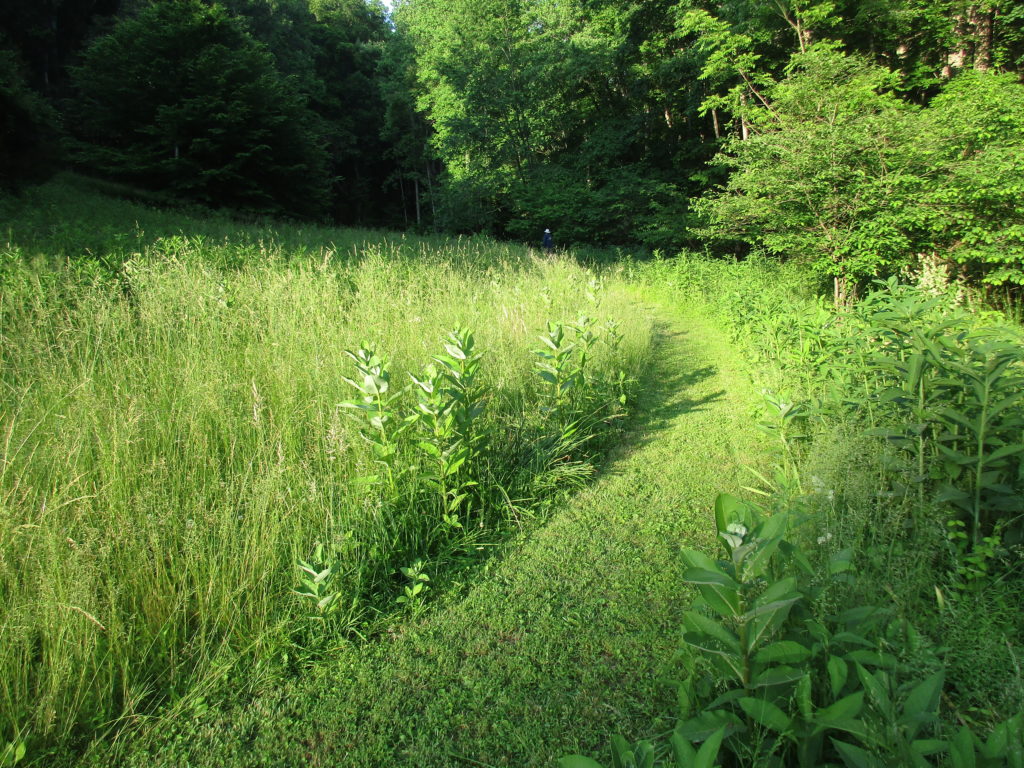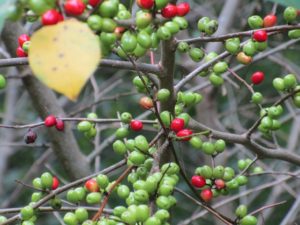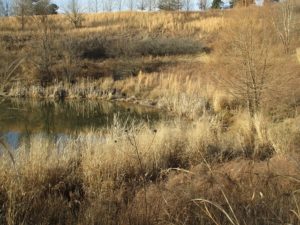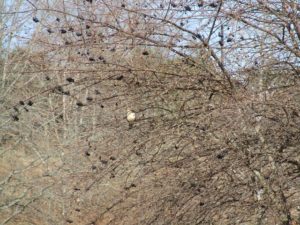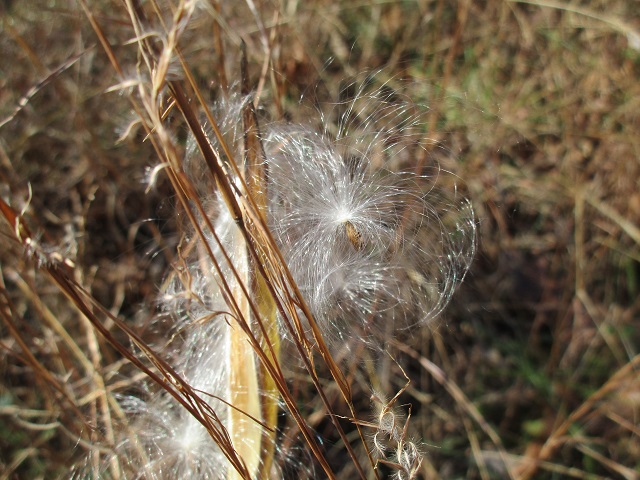The path to the hollow meadow runs east along the creek, flanked by common milkweed (Asclepias syriaca), just beginning to bud now in early June along with patches of Butterfly weed (A. tuberosa) and swamp milkweed (A. incarnata) farther down.
 Switchgrass (Panicum virgatum), Deer-tongue (Dichanthelium clandestinum) and Yellow Ironweed or Wingstem (Verbesina alternifolia) run throughout and there’s an abundance of Field Horsetail (Equisetum arvense). The latter two, though native – (the horsetail, a world traveler, is found throughout the Northern hemisphere) – are quite invasive and the horsetail, while rich in nutrients for humans, is toxic to horses and can overwhelm and destroy good grass pasturage.
Switchgrass (Panicum virgatum), Deer-tongue (Dichanthelium clandestinum) and Yellow Ironweed or Wingstem (Verbesina alternifolia) run throughout and there’s an abundance of Field Horsetail (Equisetum arvense). The latter two, though native – (the horsetail, a world traveler, is found throughout the Northern hemisphere) – are quite invasive and the horsetail, while rich in nutrients for humans, is toxic to horses and can overwhelm and destroy good grass pasturage.
Our meadow’s just for walking, though, and giving sustenance of course to the insects and animals that follow its seasons. We let it run wild except for rouging out Asian bittersweet and bits of barberry that sprout from bird-dropped seeds. The rule is to bring a spade and clippers on any walk, but sometimes we forget and just wander down the mowed path that ends in a little Sassafras grove with a bench made from discarded University amphitheater balustrades and a piece of slate.
 A spring scattering of California poppy seeds over the old burn pile has been a success. We’re not burning brush this season, instead using woody debris to bulwark eroded parts of the creek or stacking it in the woods
A spring scattering of California poppy seeds over the old burn pile has been a success. We’re not burning brush this season, instead using woody debris to bulwark eroded parts of the creek or stacking it in the woods
 Bloodroot (Sanguineria canadensis) and Black Kohosh (Cimicifuga racemosa) congregate in the shade back there with a little Sourwood (Oxydendrum arborescens) and bluebird house tucked in at the edge of the woods.
Bloodroot (Sanguineria canadensis) and Black Kohosh (Cimicifuga racemosa) congregate in the shade back there with a little Sourwood (Oxydendrum arborescens) and bluebird house tucked in at the edge of the woods.
The meadow is not wholly native. Perilla is sprouting and the under-story of the woods is lush with bright green stilt grass (Microstegium vimineum) an inevitable denizen of all the woodlands around us over the years. There is no stopping it. It will run its course like water.
The deer – another force of nature – browse everything else to the ground except for the wood and Christmas ferns which persist in clumps along the creek.There’s nothing stopping them either despite reports of coyotes yipping in the spring. Multiflora rose tumbles along the edges.
In spite of the aggressive nature of many of these plants, they allow for a remarkable variety.
Lyre-cup Sage (Salvia lyrata), creeping Verbena, Violets and Violas line the pathway and Fleabane (Erigeron philadelphicus), Buttercups (Ranunculus sp.) and an unknown small starry white flower weave through the grasses. There was a lovely bit of Meadow Rue (Thalictrum polygamum), but they apparently are top on the deer’s menu.
Spicebush (Lindera benzoan) with their pale yellow spring flowers and bright shiny red summer berries stud the upper sunnier creekside. The birds strip them after they ripen but we get to enjoy them for awhile.
We get to enjoy everything for awhile, so we must pay attention.

